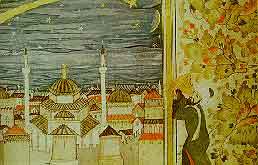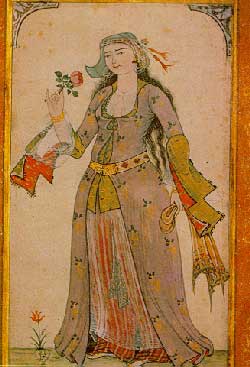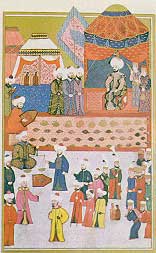|
|
|
DECORATIVE ARTS MINIATURE |



Miniature The basic characteristics of form, design, colour and representation in Turkish art developed primarily in the realm of miniature painting. The Turkish miniature style was influenced by many trends and developed over the centuries from the empires of Central Asia to the Seljuks and from the foundation of the Ottoman Empire to the conquest of Istanbul and the Tulip era. It was during the Seljuk era that miniature painting attained the stature of national art. It was during this period that Nakishane (schools of embroidery) were established. An exchange of miniature artists about the same time between Turkey and Iran further influenced these arts in both countries. The Ottoman style in miniatures made itself evident in the 15th century, leading to the production of classic examples in the 16th Century. The romantic scenes of landscaping in Persian miniatures were simplified in Ottoman miniature by the reducing detailed landscape scenes to plain backgrounds. Human figures, buildings, and other main elements of the subject predominated. In classical Turkish miniatures, lines are straight, colours are vivid and the style is narrative. Miniature art is known fo its strongly-built heroes, simplicity, selection of themes from real life and the powerful concept of colour. The most important studies on miniature painting after the Republican era began were carried out by Ord. Prof. Süheyl Ünver. Courses are supported by the Ministry of Culture with a view towards popularizing the art. Work on miniatures is carried out in Istanbul, Ankara, Konya, Izmir, and Kütahya provinces. |